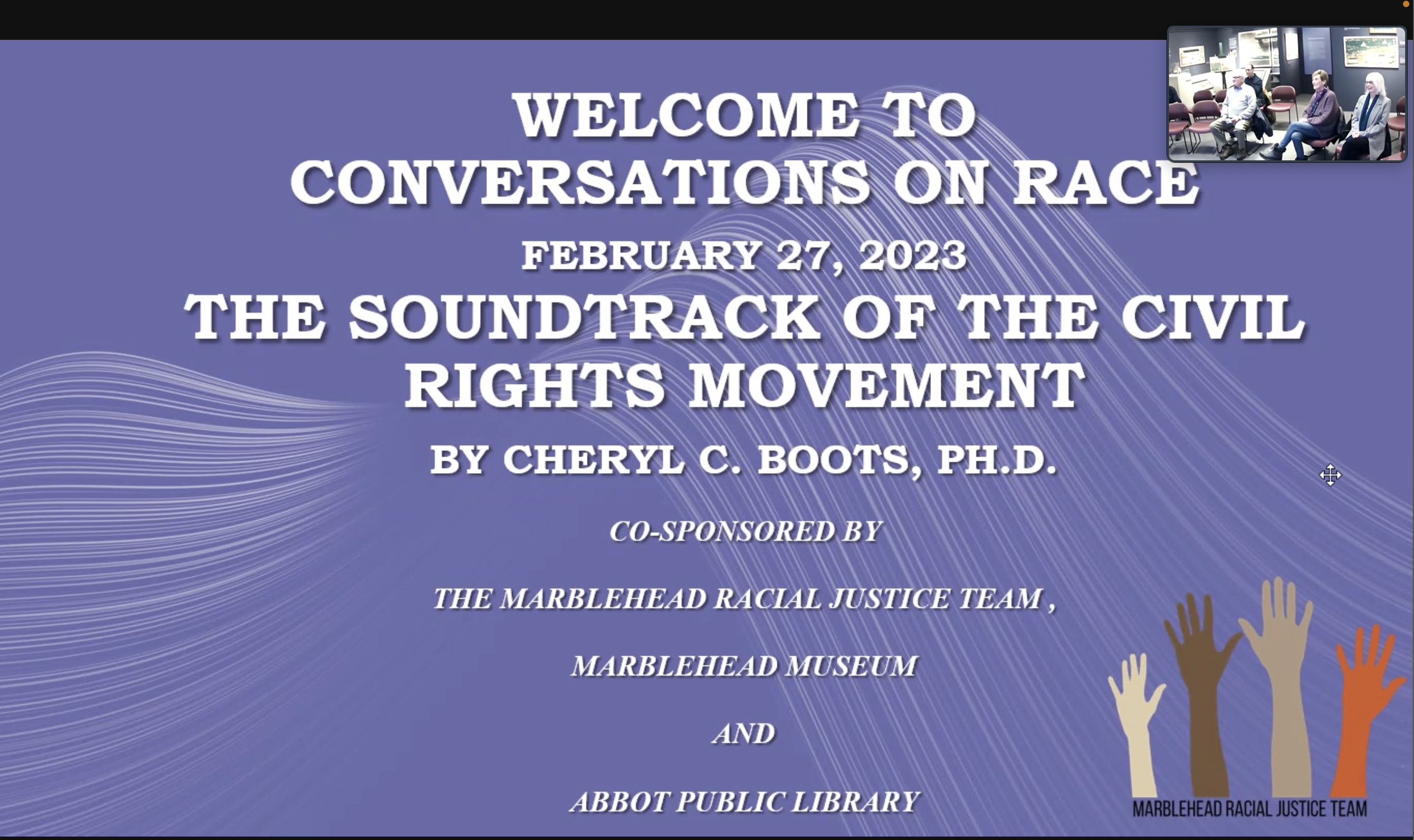On Tuesday, February 27 Marblehead Racial Justice Team speaks on the influence soundtracks had during the Civil Rights Movement.
Cheryl Boots, PH, D., spoke on the different roles music played during different periods in time in the Southern Freedom Movement. Including Bernice Johnson Reagon who was a founding member of the student non-violent coordinating committee’s Freedom Singers in the Albany Movement in Georgia in the early 1960s.
In her song, song leader, composer, scholar, and social activist Reagon used music and words to tell stories. In the song “Over My Head” Reagon expressed how there’s trouble in the air, their drama, and the trauma of too many dead but besides all that, she sees liberty and equality.
“I’ve been thinking about these songs, and you know they were very powerful at the time, but they don’t really reach an audience in the 21st century the same way,” said Boots; after singing “Over My Head.”
Music energized and motivated people, creating a “beloved community” of the protesters who demanded that all Americans have equal access to public venues and to voting and legal systems.
Many of the college-age activists adapted popular songs, advertising jingles, and ballads as well as gospel songs and spirituals. In them, they expressed their hopes, fears, and frustrations.
“The songs are very emotional, and they stimulate all the emotions and feeling that these people had because they are not allowed to express them in public,” said a participant during the session.
Herbert Lee, a farmer who helped register black votes in 1961 was murdered in Mississippi in broad daylight by state legislator E.H. Hurst. For Boots, “They really didn’t have access to telling the story in any other way, rather than by music.”
They sang the song so of Herbert Lee to make him part of Mississippi history, Herbert Lee’s spoken word, “They sang the news. They sang the truth. They sang the song United and strong. Although Hurst killed him Lee wasn’t a victim. Herbert Lee did not cower in his final hour. These words like flowers: Herbert Lee, Rest in power,” provoke emotions of anger or assertiveness, which to some can be easier to come across over sadness.
“It’s very disturbing and reminds them of Emmett Till’s murder – a 14-year-old African American who was abducted, tortured, and lynched in Mississippi,” said a participant during the session.
“The spoken word makes you think about every single word. Where sometimes I get a little lost in the melody, so I think it’s extremely powerful,” said a participant during the session.
Because of the 21st century technology, specifically brain scans, researchers can point to what parts of the brain are activated when people sing or when they listen to music.
“What happens is, there’s an area of the brain that activated that is associated with empathy. And empathy is really what is part of a community. So, community development comes very much from singing, and singing together.” Said Boots.
In paction penitentiary, Freedom riders used and revised patriotic lyrics to serve their purposes. Marilyn Eisenberg, who was incarcerated along with 11 other freedom riders came up with, “Battle Hymn” a song that expressed the freedom riders and their life at Parchman Prison.
The inevitability asserted in the chorus, “black and white shall ride together”, parallels the goals of the movement with praising God, as done in the “Battle Hymn” refrain.

